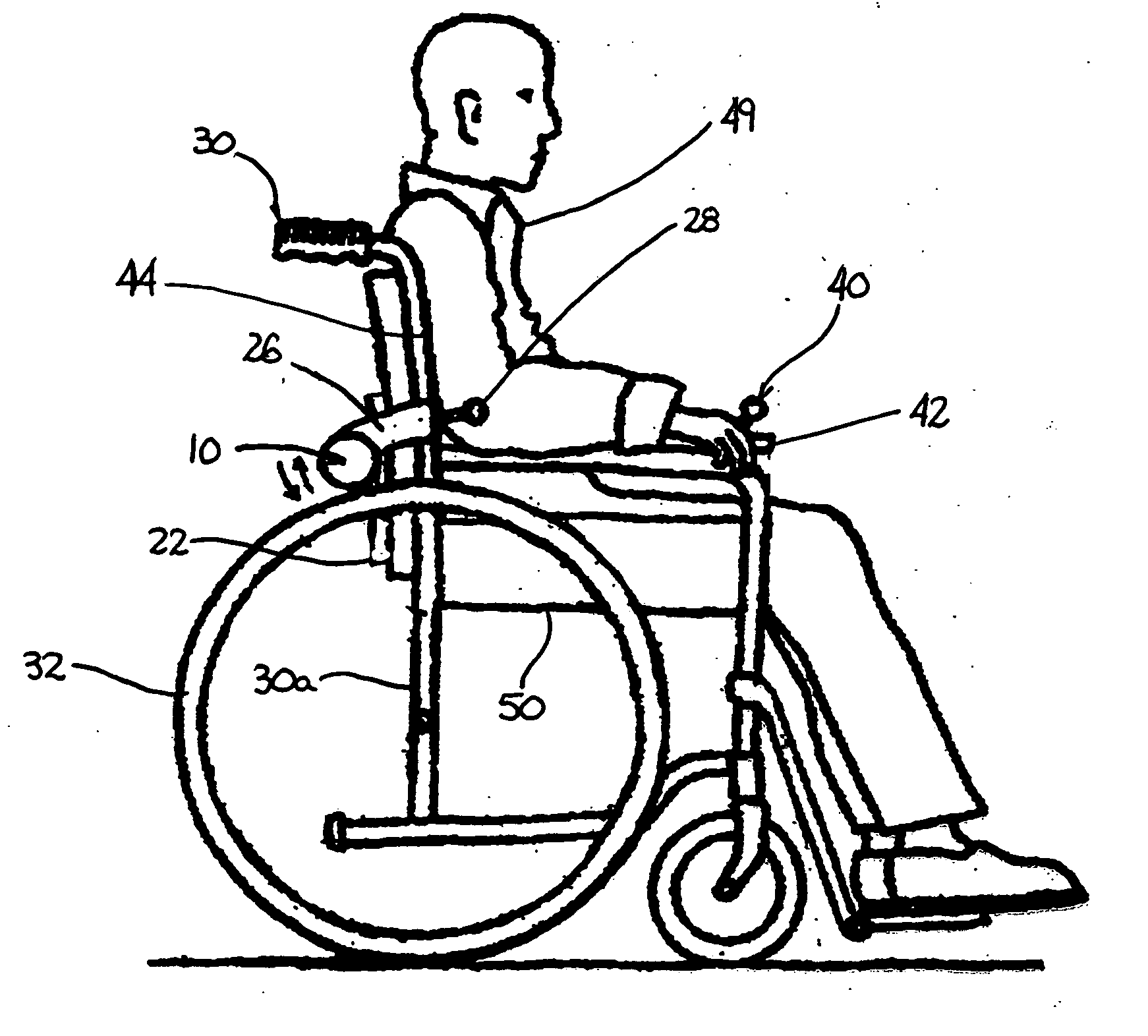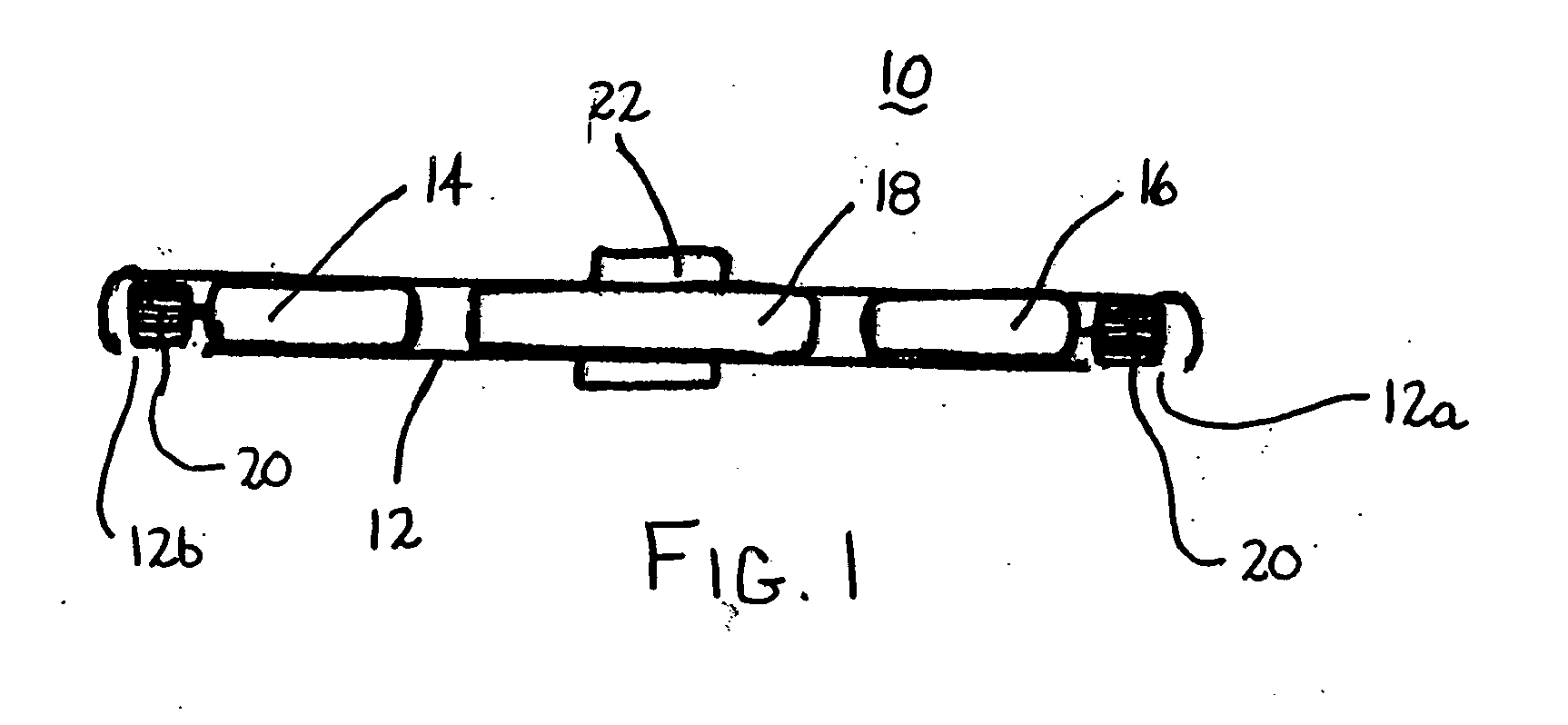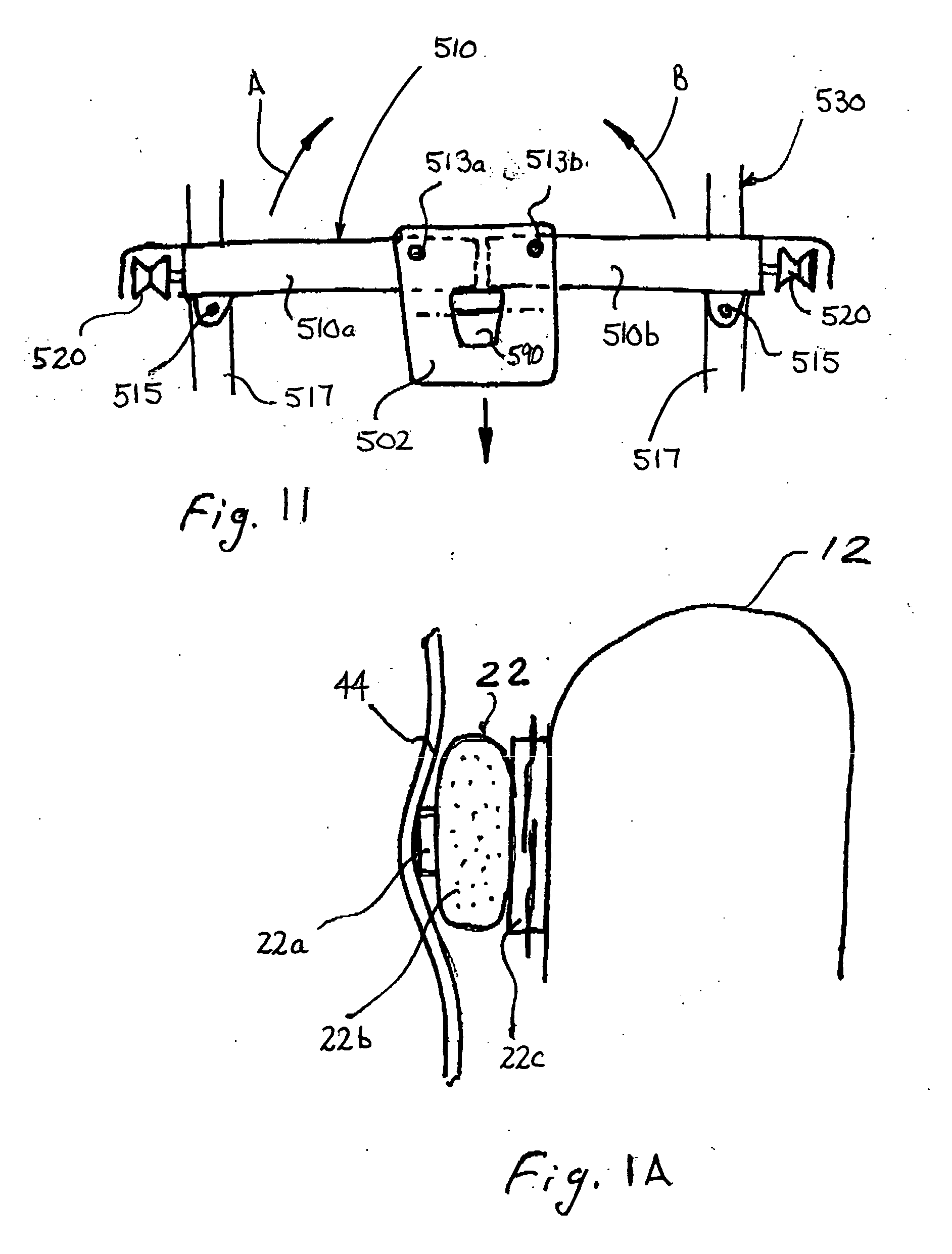Mobility device
- Summary
- Abstract
- Description
- Claims
- Application Information
AI Technical Summary
Benefits of technology
Problems solved by technology
Method used
Image
Examples
Embodiment Construction
[0014] Preferred embodiments of the presently disclosed mobility device will now be described in detail with reference to the drawings, in which like reference numerals designate identical or corresponding elements in each of the several views.
[0015]FIG. 1 illustrates one embodiment of the presently disclosed mobility device shown generally as 10. Mobility device 10 includes a housing 12 having a first opening 12a and a second opening 12b. Housing 12 is dimensioned to receive at least one, and preferably, a pair of drive motors 14 and 16. Housing 12 may be constructed from a metal or a plastic having the requisite strength requirement. Alternately, other materials of construction can be used to construct housing 12. In one preferred embodiment, a battery 18 is supported within housing 12 for powering drive motors 14 and 16. Preferably, motors 14 and 16 are reversible DC motors and battery 18 is a 12V rechargeable battery. Alternately, other known drive motors and power sources may ...
PUM
 Login to view more
Login to view more Abstract
Description
Claims
Application Information
 Login to view more
Login to view more - R&D Engineer
- R&D Manager
- IP Professional
- Industry Leading Data Capabilities
- Powerful AI technology
- Patent DNA Extraction
Browse by: Latest US Patents, China's latest patents, Technical Efficacy Thesaurus, Application Domain, Technology Topic.
© 2024 PatSnap. All rights reserved.Legal|Privacy policy|Modern Slavery Act Transparency Statement|Sitemap



